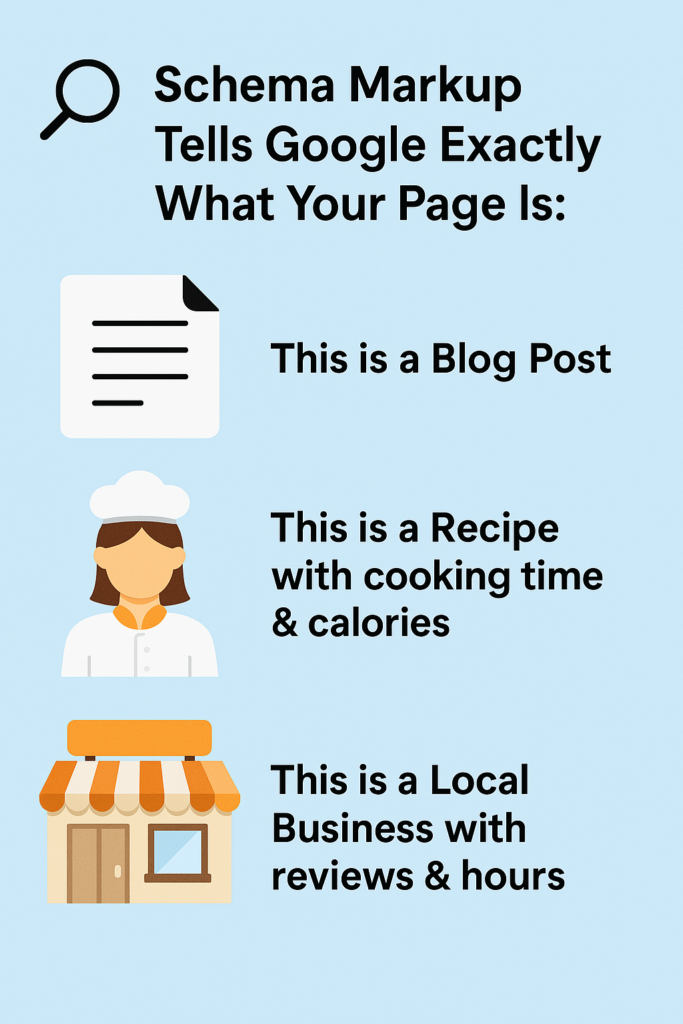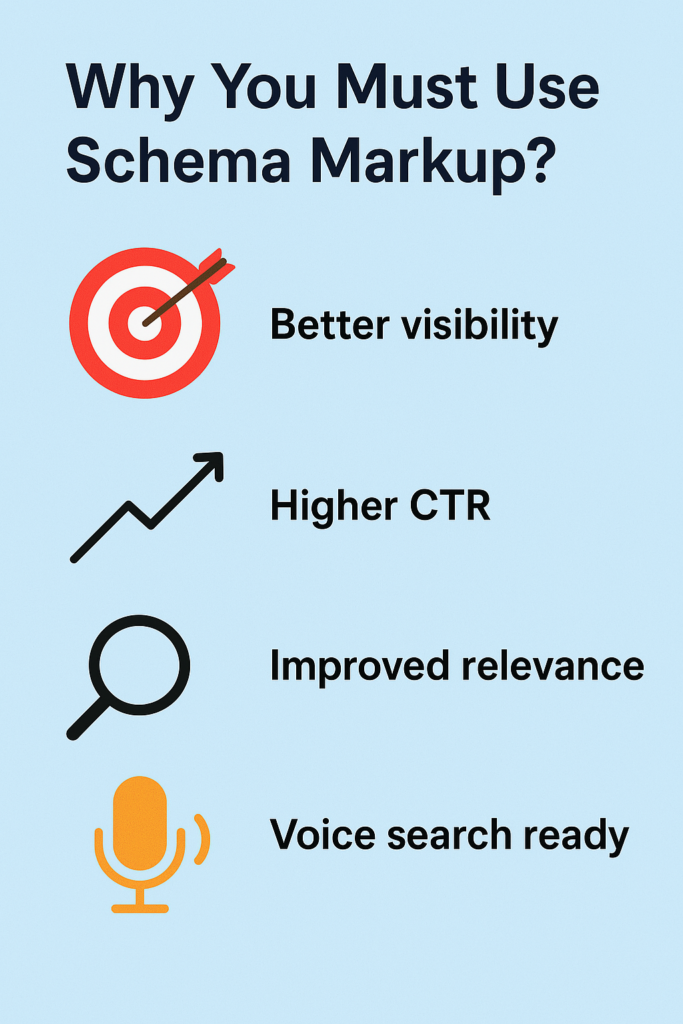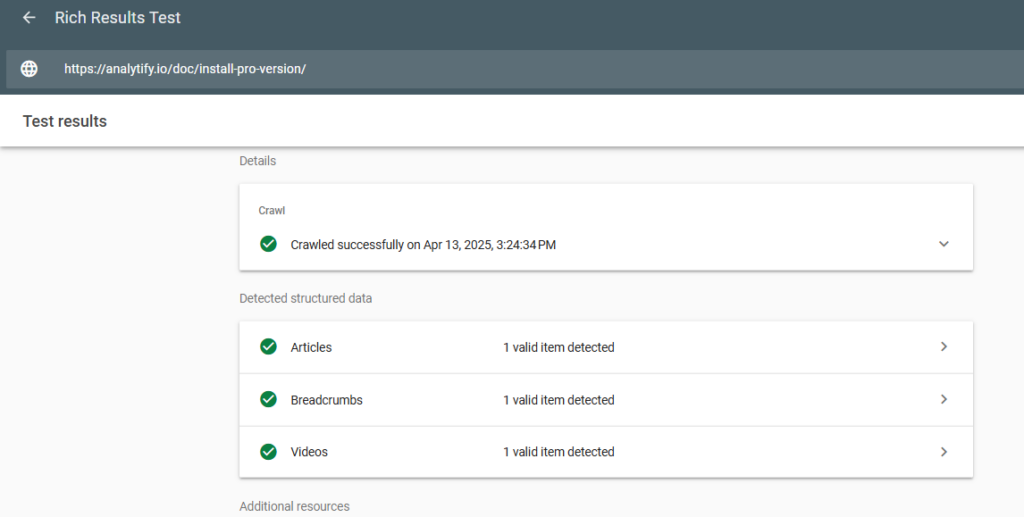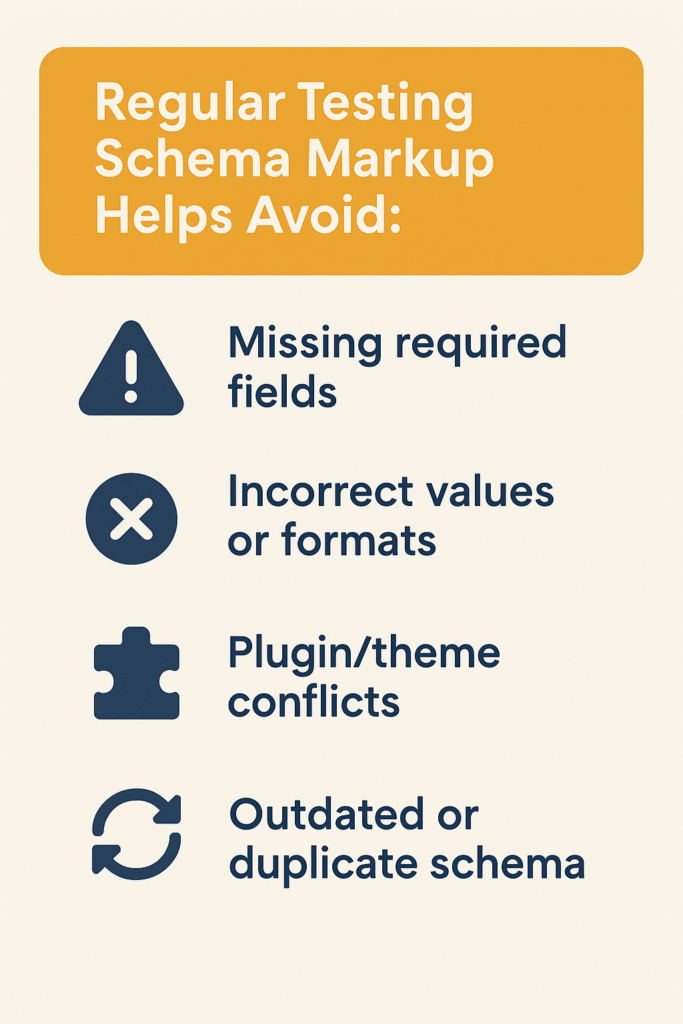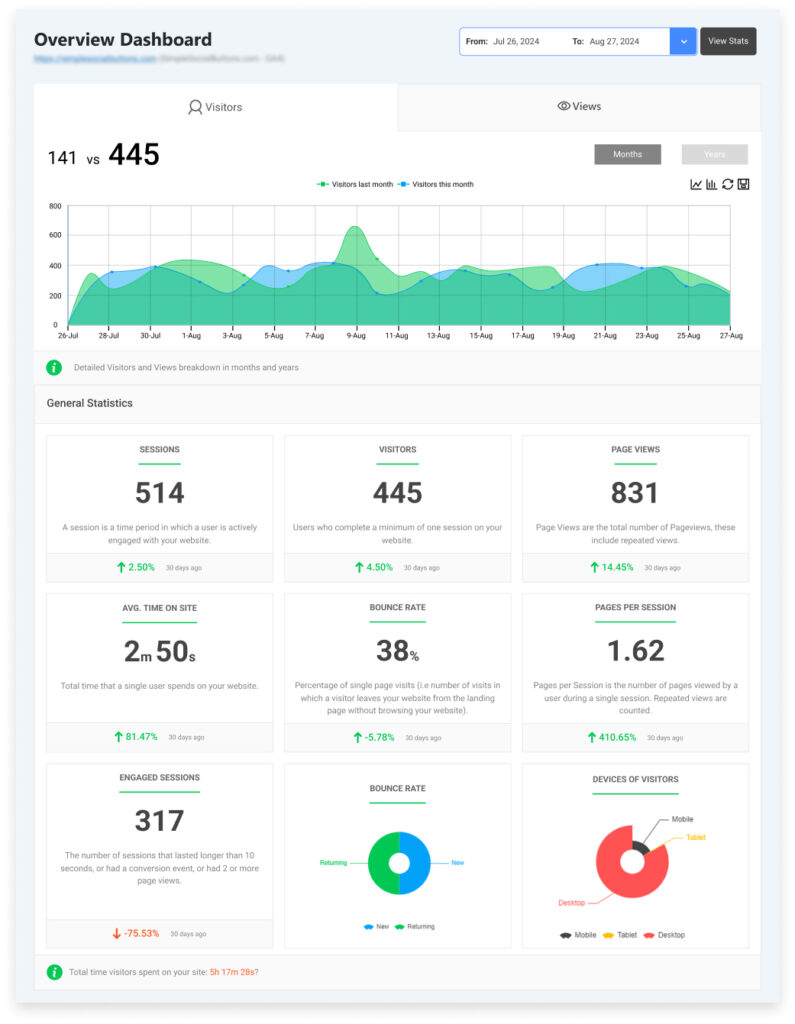
How to Add Schema Markup in WordPress (2025)
Have you ever wondered how some websites show star ratings, event details, or FAQs directly in Google search results? That is because of schema markup.
Schema markup is a form of structured data that helps search engines better understand your content. And in 2025, it’s no longer just an extra for SEO. It’s essential.
In this guide, you’ll learn what schema markup is (and how it works in 2025), different types of schema for various content, and how to add schema markup in WordPress.
Whether you’re running a blog, an online store, or a local business site, adding WordPress schema markup can give your pages a visual boost in search results, leading to:
- Higher click-through rates (CTR)
- Enhanced visibility with rich snippets
- Improved chances of ranking in voice search and featured snippets
WordPress Schema Markup (TOC):
What is Schema Markup?
Schema markup is a type of structured data that helps search engines understand your content more accurately.
Schema markup is like adding labels or contextual clues to your content.
In technical terms, it uses a format called JSON-LD (JavaScript Object Notation for Linked Data), which is embedded in your site’s code but invisible to users.
Its goal is to make your content eligible for rich results of enhanced listings in Google with stars, images, FAQs, and more.
Why Schema Matters for WordPress Sites
Using WordPress schema markup can improve your SEO without affecting how your site looks.
Here’s how it works under the hood:
| Benefit | What It Means |
| Better visibility | Your listings can appear with extra info in Google (rich results) |
| Higher CTR | Rich snippets grab more attention than plain links |
| Improved relevance | Helps Google match your content with the right user intent |
| Voice search ready | Schema helps smart assistants understand your content structure |
Schema can give you that extra edge in competitive SERPs even if you’re already ranking.
Common Types of Schema for WordPress
Here are some of the most-used schema types that fit naturally into a WordPress setup:
| Schema Type | Use Case |
| Article | Blog posts, news content |
| Product | WooCommerce & ecommerce stores |
| FAQPage | FAQ blocks on blog or service pages |
| LocalBusiness | For physical stores, restaurants |
| HowTo | Step-by-step tutorials |
| Review | Service or product feedback |
| Breadcrumb | Navigation and internal linking help |
How Schema Works Behind the Scenes
Once added, schema tells search engines what your page is about. Here’s a simplified example of a JSON-LD snippet:
{
"@context": "https://schema.org",
"@type": "Article",
"headline": "How to Add Schema Markup in WordPress",
"author": {
"@type": "Person",
"name": "John"
},
"datePublished": "2025-04-13"
}This tells Google: “This is an article, written by John, published on this date.” Simple, but powerful.
Now that you understand what schema markup WordPress is and how it helps, let’s prepare your site to implement it the right way.
Preparing to Add Schema Markup
Before jumping into plugins or code, let’s get your site ready to add schema markup in WordPress smoothly and safely. A little planning upfront can save hours of debugging later.
1. Decide What Schema Types You Need
Schema isn’t one-size-fits-all. What you add depends on your website’s content and goals.
Here’s a quick guide to match schema types with WordPress site types:
| Website Type | Recommended Schema Types |
| Blog | Article, FAQPage, Breadcrumb |
| Business Website | LocalBusiness, Organization, Review |
| Online Store | Product, Offer, Review, AggregateRating |
| Recipe or Food | Recipe, Author, NutritionInformation |
| Tutorial/How-To | HowTo, VideoObject |
2. Choose Your Implementation Method
You’ve got two main options to add schema markup to WordPress:
| Method | Best For | Plugin-Free? |
| Using Plugins | Beginners & content teams | ❌ No |
| Manual Code (JSON-LD) | Devs & performance-focused users | ✅ Yes |
We’ll cover both in the next section, but choose your path based on your comfort level and site needs.
3. Backup Before You Break Things
Before adding or editing any code, create a full backup of your WordPress site. This is especially important if you’re planning to add schema manually through your theme or functions.php.
4. Check What’s Already There
Some themes or SEO plugins (like Yoast or Rank Math) already include default WordPress schema. You don’t want to add duplicate or conflicting schema.
Use a schema markup checker like:
- Google’s Rich Results Test
Paste your URL and see what schema is already active. From there, you can decide what to add, override, or customize.
Once your site is backed up, scanned, and planned, you can add schema markup in WordPress.
Methods to Add Schema Markup in WordPress
Now that your site is ready, it’s time to actually implement schema markup. You’ve got two main paths:
- Plugins: Perfect for beginners who want a visual interface
- Manual Methods: Ideal for those who want total control, speed, and no plugin bloat
Let’s explore both.
How to Add Schema Using Plugins (Beginner-Friendly)
Plugins handle all the behind-the-scenes code, so you just click, fill forms, and save. Here are the best schema markup generator plugins in 2025:
| Plugin | Best For | Free/Pro |
| Rank Math | SEO all-in-one + schema | ✅ / ✅ |
| AIOSEO (All in One SEO) | Easy UI + smart automation | ✅ / ✅ |
| Schema Pro | Advanced mapping, WooCommerce | ❌ / ✅ |
| Yoast SEO | Simplicity + core schema only | ✅ / ✅ |
| Schema & Structured Data WP/AMP | 35+ schema types supported | ✅ / ✅ |
How to Add Schema with Rank Math (Step-by-Step)
- Install Rank Math
Go to Plugins >> Add New >> Search “Rank Math” >> Install & Activate. - Setup Wizard
Run the wizard and choose the default schema type (e.g., Article, Blog, News). - Edit a Post/Page
Scroll down to the Rank Math section and click Schema >> Schema Generator. - Choose a Schema Type
Select Article, FAQPage, Product, LocalBusiness, etc. - Fill Out the Fields
Use dynamic variables like %title% and %author% for automation. - Update & Validate
Save the post and test it using Google Rich Results Test.
How to Add Schema to WordPress Without Plugins (Manual Method)
If you’re performance-focused or building a custom theme, you can add schema to WordPress without plugin using JSON-LD.
Method 1: Using Custom HTML Block in Gutenberg
- Open any post or page
- Add a Custom HTML block
- Paste your schema code, like this:
{
"@context": "https://schema.org",
"@type": "Article",
"headline": "How to Add Schema Markup in WordPress",
"author": {
"@type": "Person",
"name": "Sarah"
},
"datePublished": "2025-04-13"
}- Update the page and run it through a schema markup checker.
Method 2: Add Schema in header.php or functions.php
This is more permanent and loads schema on every page.
Steps:
- Go to Appearance >> Theme File Editor
- Select header.php or functions.php
- Paste your schema code just before </head>.
This is best for developers or those building custom themes.
No matter which method you choose, always validate your schema to make sure it works. In the next section, we’ll show you exactly how to do that and how to fix common issues quickly.
How to Test and Validate Schema Markup
You’ve added your schema markup in WordPress! But how do you know it’s actually working?
You need to validate schema markup using tools designed to catch errors before Google does. Testing ensures your markup is readable, complete, and ready for rich results.
Why You Must Test Schema?
Schema is sensitive. A single typo, wrong field, or missing property can make your entire markup invalid. Even worse is that it might block rich results without any visible errors on your site.
Fixing Common Schema Issues
| Error | Fix |
| Missing headline or author | Add required fields via plugin or code |
| Invalid JSON | Use JSONLint to correct formatting |
| Duplicate schema types | Disable one source (plugin or theme) |
Once validated, keep your schema active and error-free. Next, we’ll explore some advanced schema strategies, including multiple types, dynamic data, and WooCommerce setups.
Advanced Schema Markup Techniques
Already added basic schema to your site? Awesome. Now let’s level up. These advanced techniques will help your site stand out in SERPs, work smarter, and scale structured data across hundreds of pages.
A. Using Multiple Schema Types on One Page
You can (and often should) use more than one schema type per page — as long as each one serves a clear purpose.
Example combo for a blog post:
- Article — describes the post itself
- FAQPage — marks up a short FAQ section
- Breadcrumb — improves navigation visibility
Use the @graph format in JSON-LD to organize multiple schema types without confusion:
{
"@context": "https://schema.org",
"@graph": [
{ "@type": "Article", "headline": "..." },
{ "@type": "FAQPage", "mainEntity": [...] }
]
}✅ Works with both manual and plugin-based setups.
B. Dynamic Schema with ACF + PHP
If you’re managing a large content site or directory, dynamic schema saves time.
Here’s how:
- Use Advanced Custom Fields (ACF) to collect schema data (like product rating, author bio, price)
- Use functions.php or a custom plugin to dynamically populate your JSON-LD
- Output schema in your <head> with wp_head
This allows you to generate custom schema for every post, automatically.
C. Schema for WooCommerce Sites
WooCommerce adds basic product schema by default, but it’s often incomplete. To improve:
- Use Rank Math Pro for advanced fields like brand, reviews, and stock
- Add Offer, AggregateRating, and Review types for full rich snippet support
- Always test product pages in the Rich Results Test
D. Local SEO? Use LocalBusiness Schema
If you’re a local service provider, LocalBusiness schema is a must.
Include:
- Business name
- Address + postal code
- Geo coordinates
- Opening hours
- Phone number
This boosts your visibility in Google Maps, local packs, and voice search.
Monitoring and Maintaining Schema Markup
Adding schema once is great, but keeping it working is what really counts.
Your content evolves, plugins update, and search engine rules change. If you don’t regularly monitor your schema markup in WordPress, you risk broken or outdated structured data and lost rich results.
A. Regular Schema Audits
Schedule a check-up every 1–3 months, or whenever:
- You change themes or plugins
- You bulk edit posts or add new content types
- You spot sudden traffic drops in Google Search Console
Pro Tip: Use tools like Ahrefs / SEMrush (for large-scale schema reports)
B. Use Google Search Console
Head to Search Console >> Enhancements
You’ll see all schema types currently detected, along with:
- Valid pages
- Pages with warnings
- Pages with errors
Fix errors quickly to avoid losing rich snippets.
Bonus: Want deeper insights into how your schema-rich pages are performing?
Analytify makes it super easy to view detailed Google Analytics data right inside your WordPress dashboard, including traffic sources, bounce rates, and behavior on schema-optimized content.
Join 50,000+ beginners & professionals who use Analytify to simplify their Google Analytics!
It’s perfect for tracking what works (and what doesn’t) in your SEO strategy.
Analytify – Track Schema Content Performance in WordPress
Once your schema markup is added and validated, the next big question is:
“Is it actually improving my traffic and engagement?”
That’s where Analytify comes in.
Analytify is the easiest way to view Google Analytics 4 (GA4) reports directly inside your WordPress dashboard. Whether you’re using Article, Product, or FAQPage schema, Analytify helps you track how those schema-enhanced pages are performing without jumping into the GA4 interface.
With Analytify, you can:
- See real-time traffic to schema-optimized content
- Monitor user behavior, bounce rate, and CTRs on rich-result pages
- Track top-performing pages with structured data
- Get simplified reports tailored for non-technical users
FAQs – Schema Markup in WordPress
1. Can I use multiple schema types on one page?
Yes! For example, you can use the Article schema for your blog post. Just make sure the schema type is relevant and valid.
2. How long does schema take to show in Google?
It usually takes 3–14 days, depending on crawl frequency. After making changes, use Google Search Console to request indexing.
3. Is schema markup necessary for every WordPress site?
Not mandatory, but highly recommended. Schema markup WordPress helps with rankings, voice search, and click-through rates especially in competitive niches.
4. What if my schema has errors?
Use a schema markup checker like Google’s Rich Results Test or Schema.org’s validator. Fix missing or invalid fields right away.
Final Thoughts on Schema Markup in WordPress
Whether you used a plugin, added JSON-LD manually, or explored dynamic schema setups, Schema markup will give:
- Higher rankings
- More engaging search snippets
- Better search engine understanding of your content
Schema markup isn’t just for Google, it’s for your users, too. It helps them find exactly what they need, faster.
Further Readings:
Now, we’d like to hear from you. Did you know which method you find easy to setup schema markup for your site?

